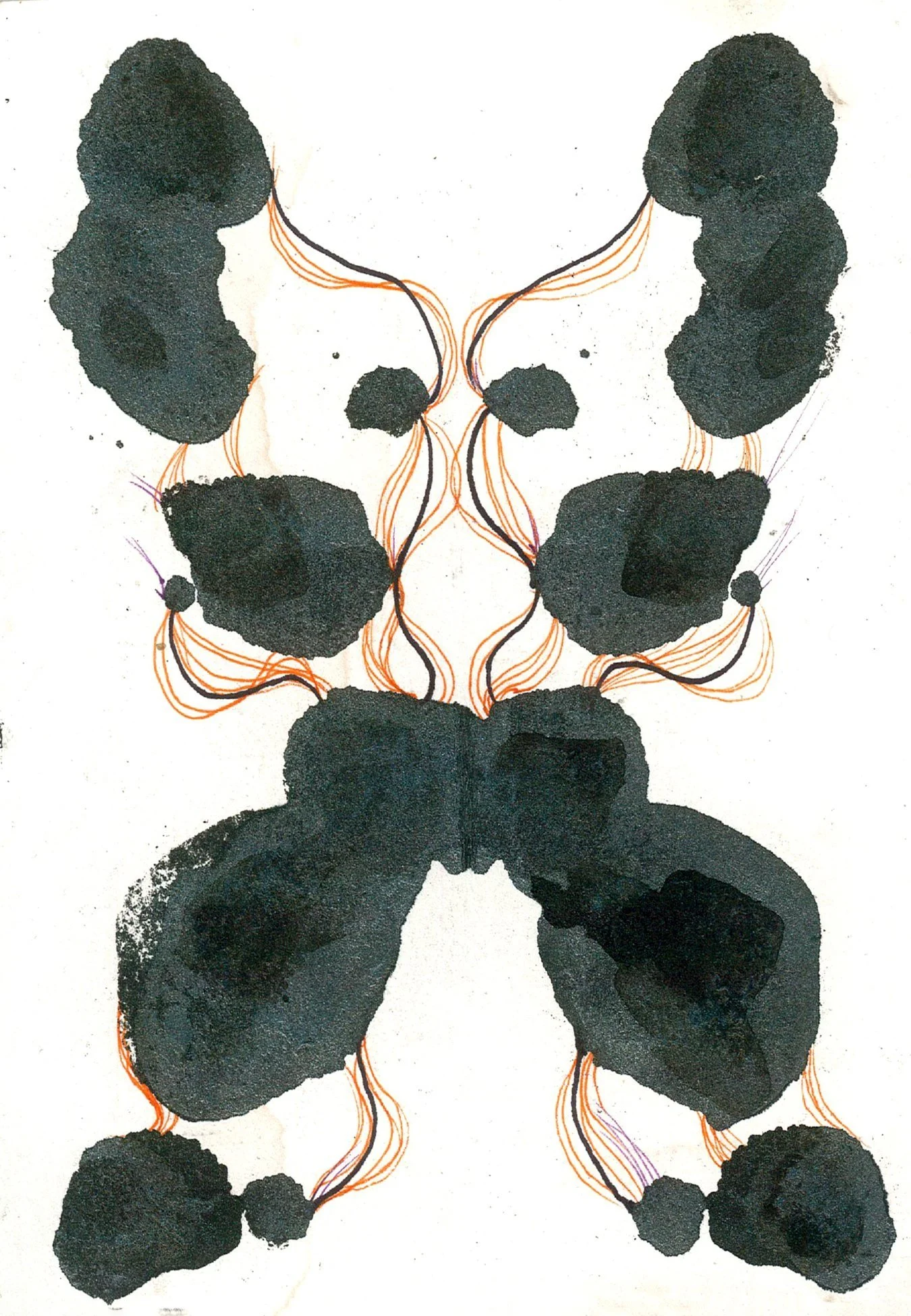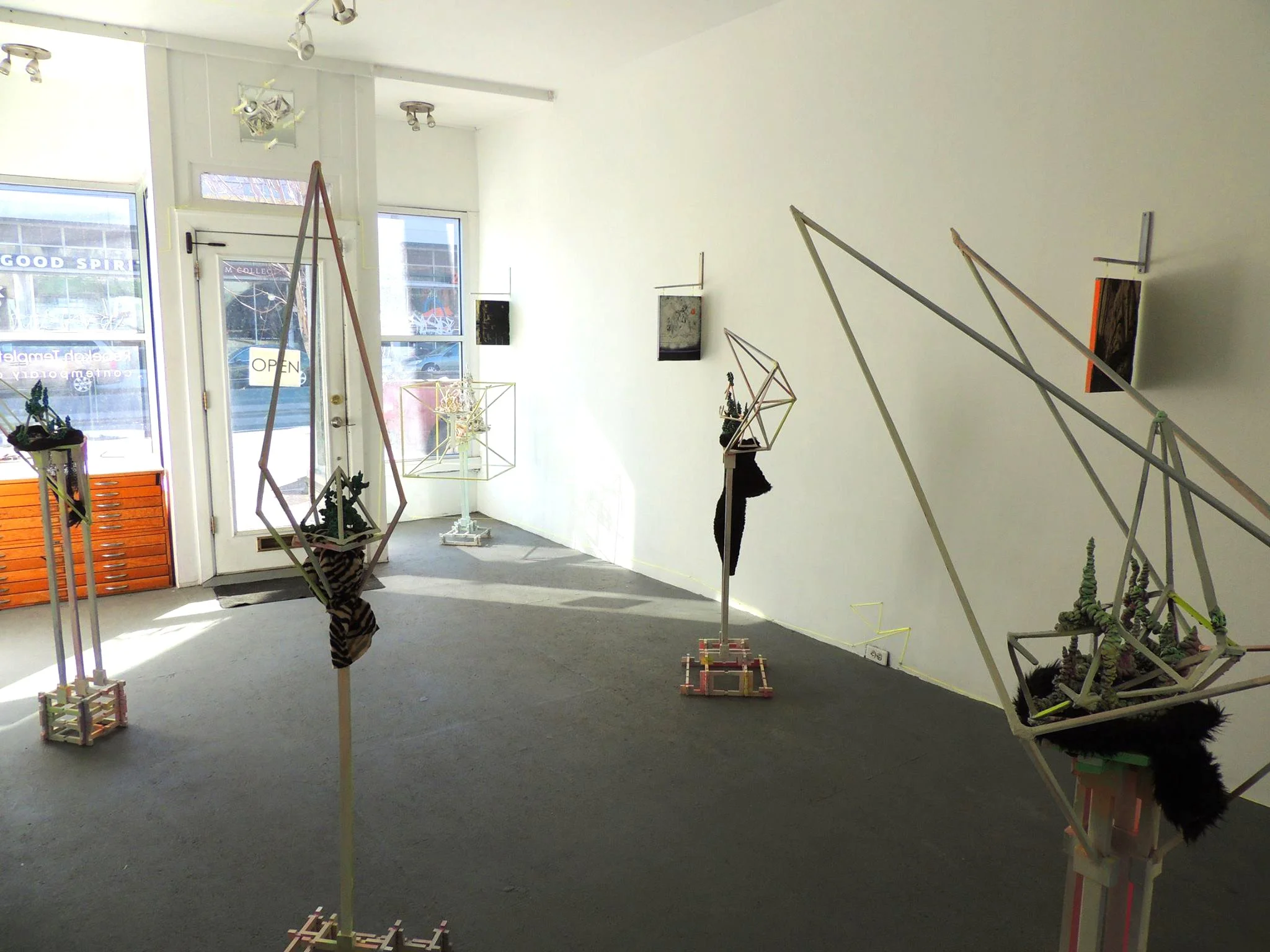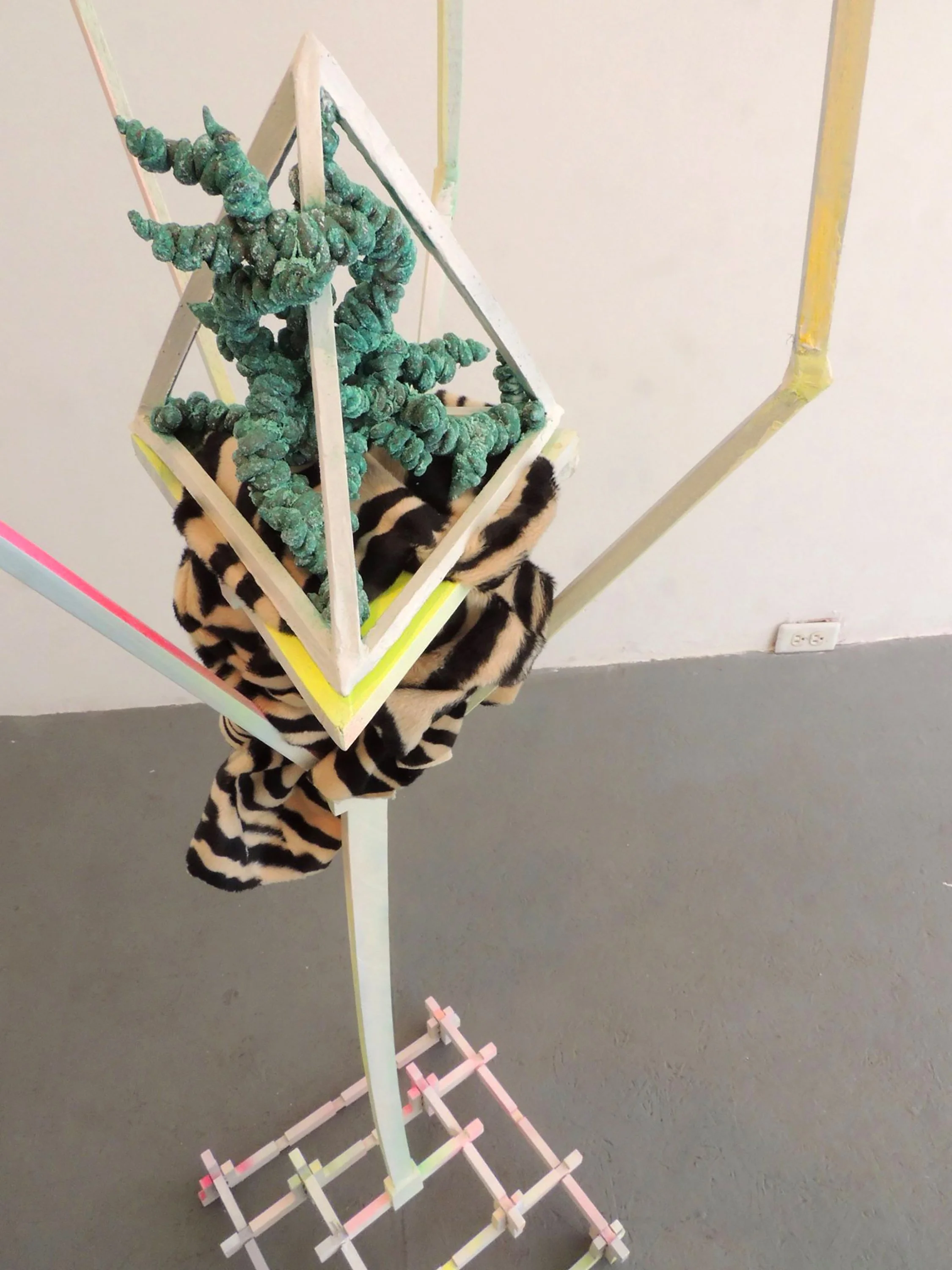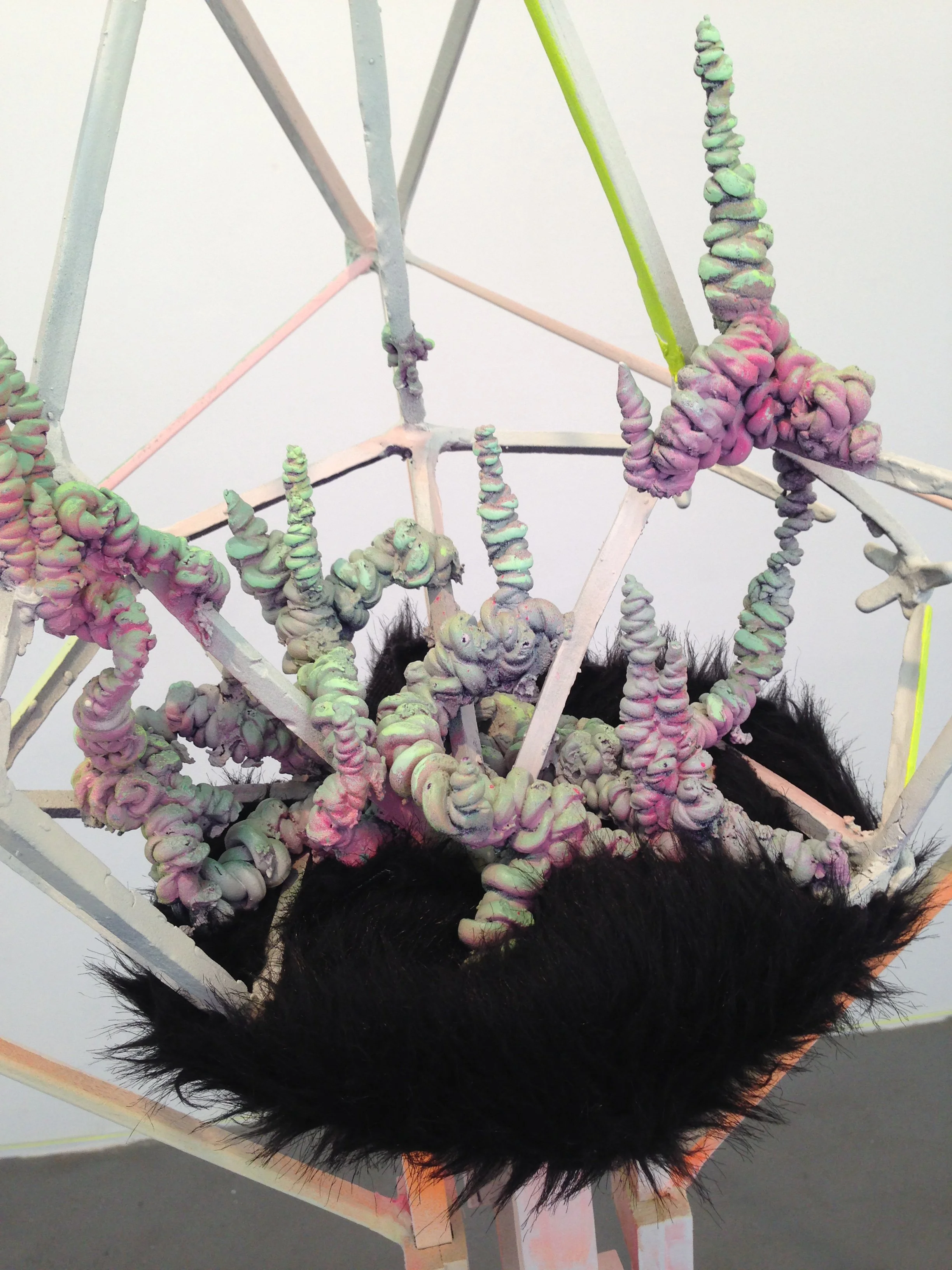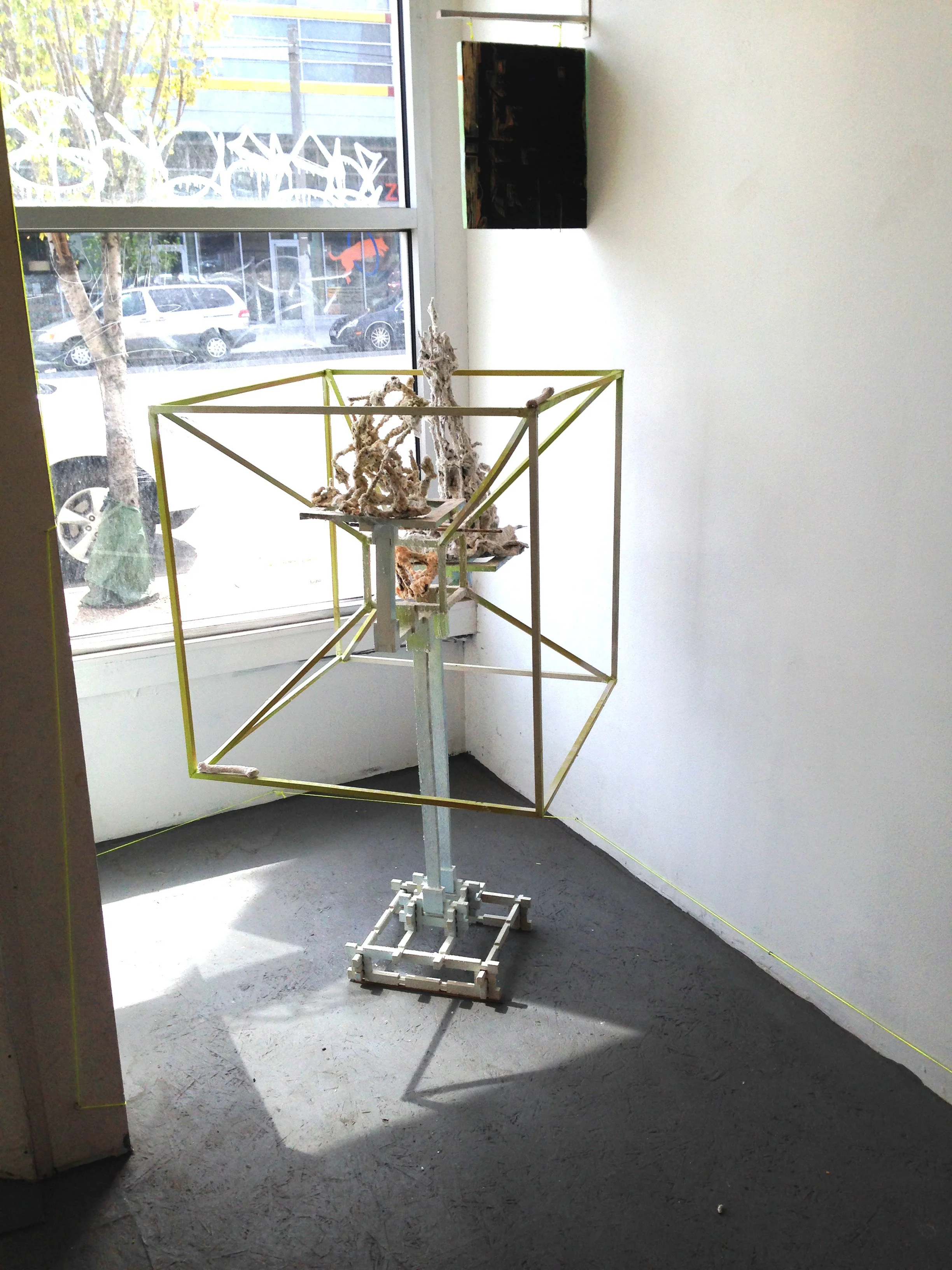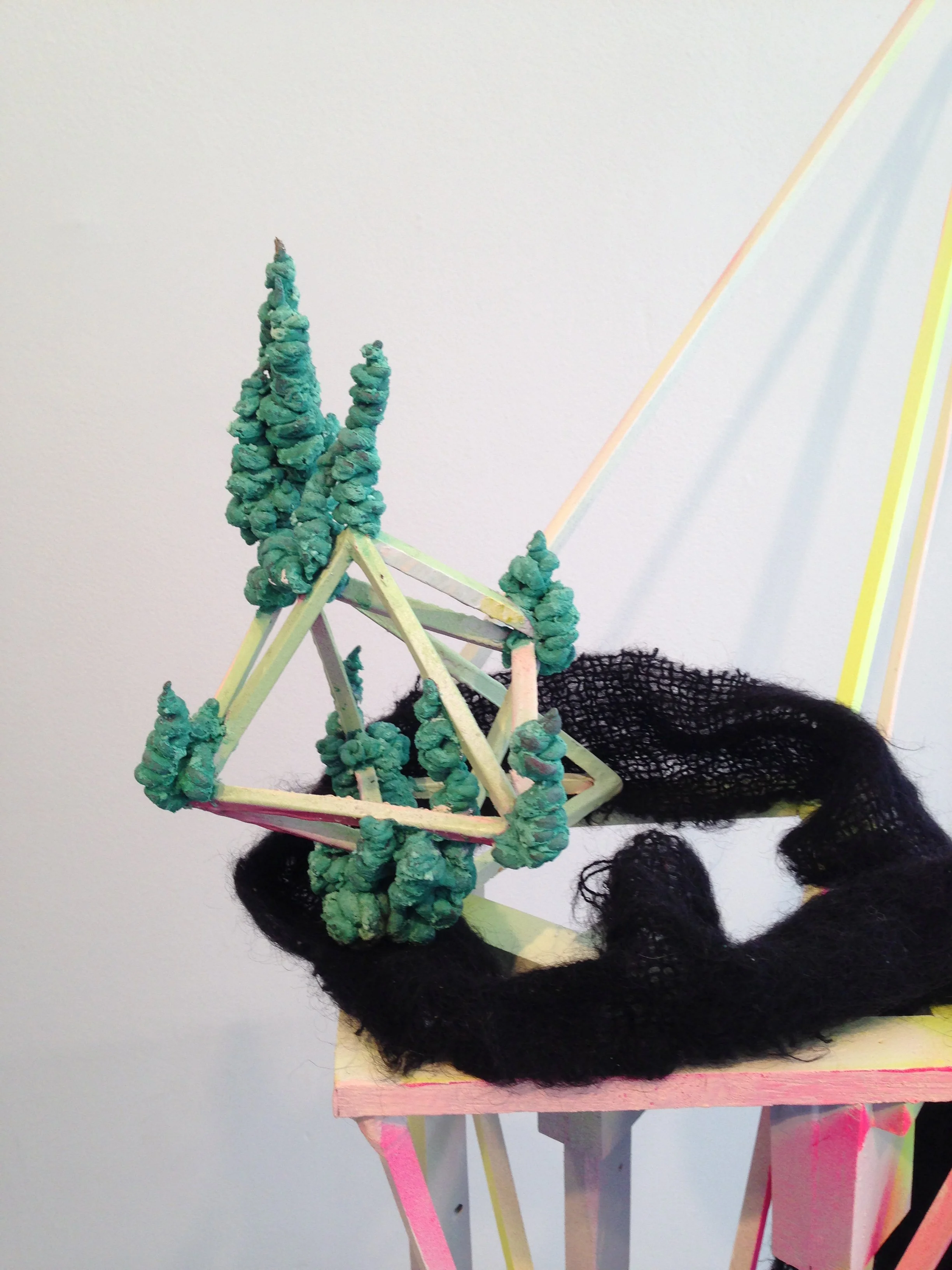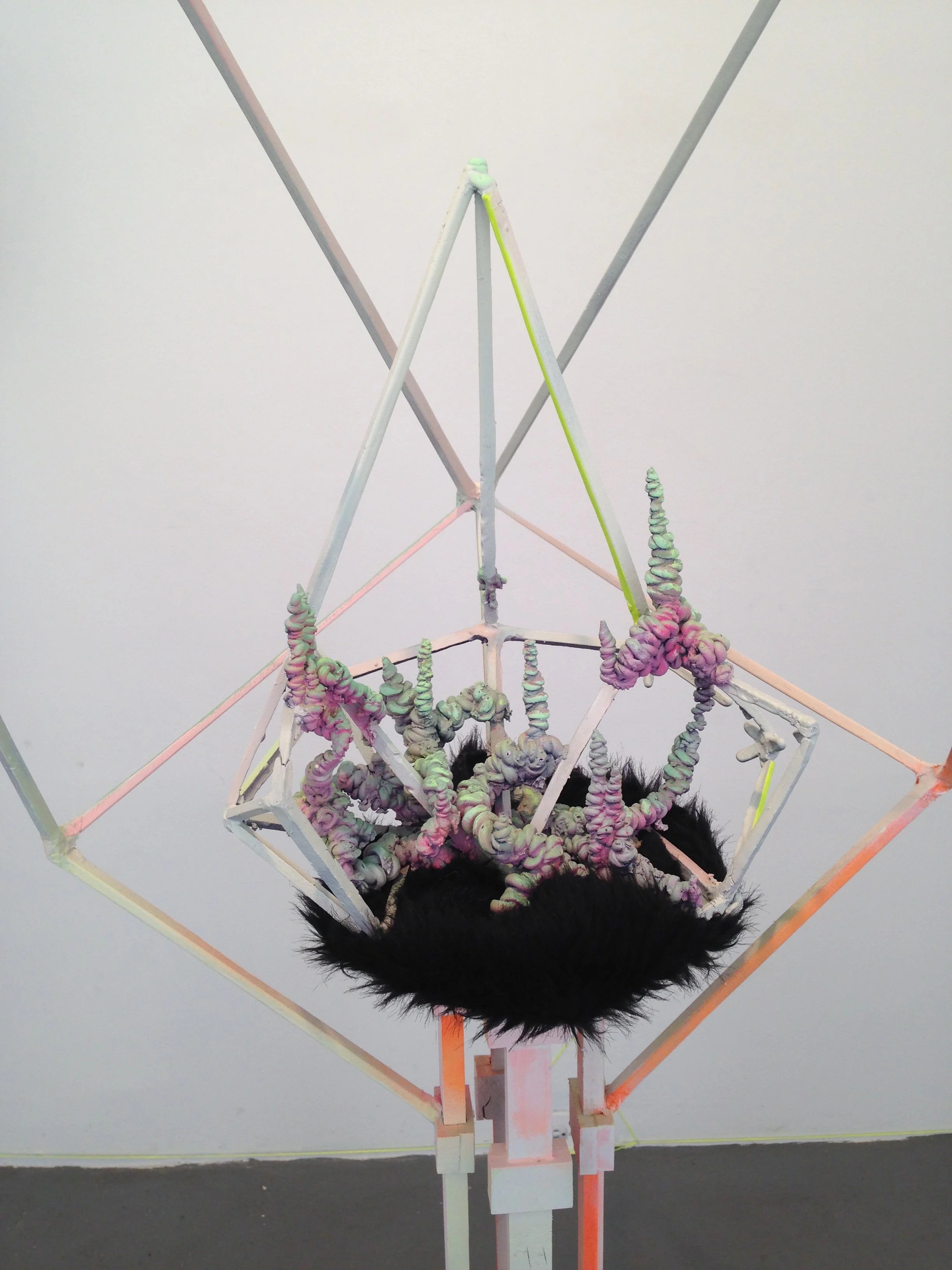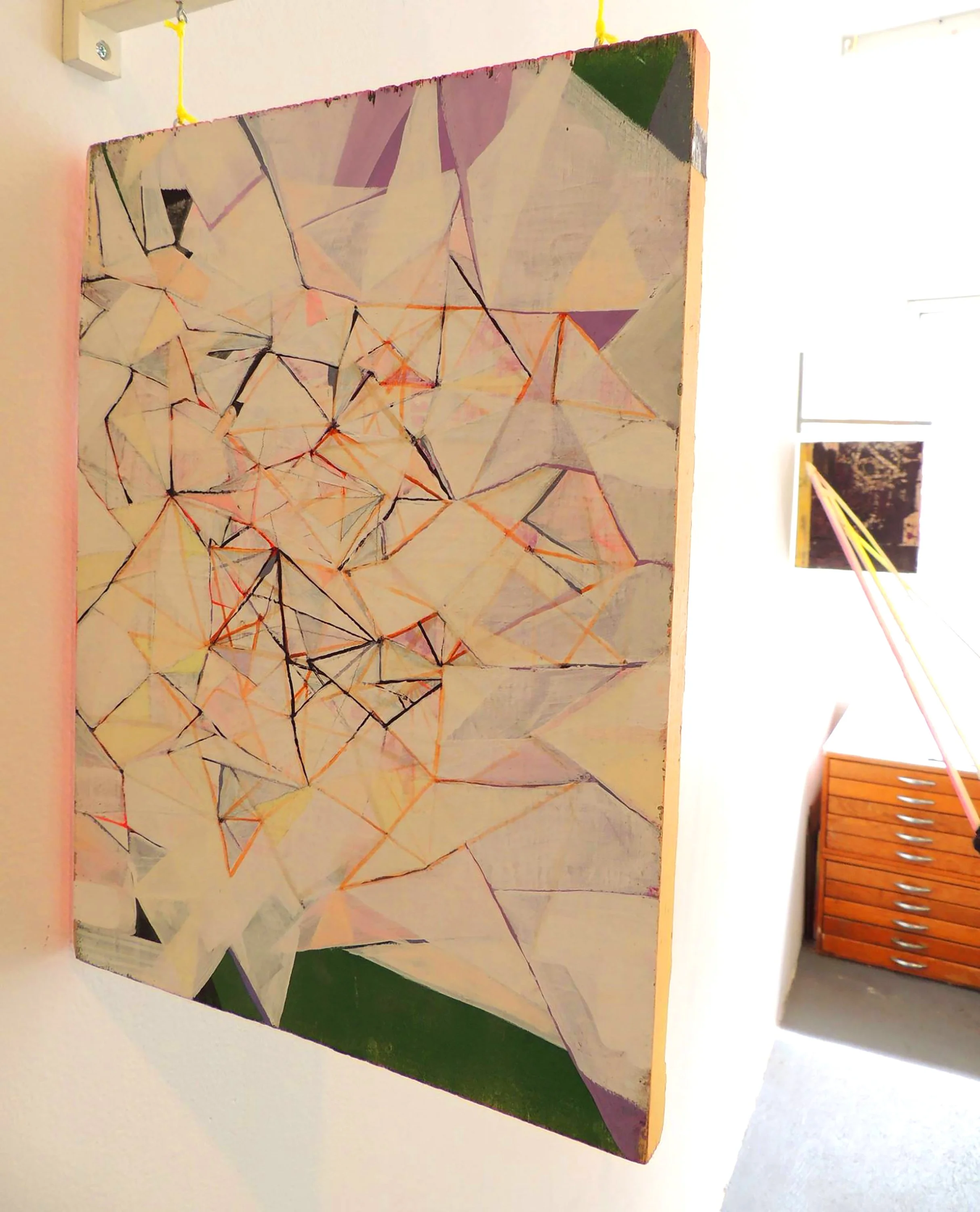Continuous Warlock Integers Rebekah Templeton 2015
The Complicated Futility of Ignorance- Kurt Vonnegut - Hocus Pocus
In Euclidean geometry, a Platonic solid is a a regular, convex polyhedron with congruent faces of regular polygons and the same number of faces meeting at each vertex. Five solids meet those criteria, and each is named after its number of faces.
I am proposing and exhibition that will be the physical manifestation of an intellectual quest, a search to answer the personal question, “What does Sacred Geometry mean to me?” I aim to create a subjective arena in which to frame the seemingly objective five platonic solids- Sacred Geometry is way for me to sublimate and transform through metaphor the psychological weight of a grinding Holy War that few are on the front lines of, but which occupies vast acres of our psychological space. In searching for the unknowable face of the Gods or trying to find meaning in first chapters of the 21st Century my aesthetic vocabulary is shifting from the tactile gesture and into the realm of geometric consciousness. Truth be told, I also don’t want to fill my life with scary pictures of monsters that would frighten my children, this was my visual battle ground of the past, now, while still viewing entropy as the most stable composition, I am choosing to create idealized harmonies, while rejoicing in all the all to human mistakes and errors that occur, consciously and unconsciously, during the constructions of these human ideals.
These objects make up the five platonic solids: the tetrahedron, representing the fire element, will be a light sculpture; the hexahedron, representing the earth element, will be an oxidized metal sculpture; the octahedron, representing the air element, will be an inflatable sculpture; the dodecahedron, representing the galaxy, will be a card game; the icosahedron, representing the water element, will be a fountain. I have created 5 free standing sculptures, different in execution, but retaining the spirit of the above concept. The finished pieces are not so literal; they became metaphors of fire, light, air, earth, and the void without having to literally rely on the materiality of these elements
Integrated within these objects will be other signs, signifiers and symbols made with various chemical and physical processes, such as erosion, decay, and electromagnetic charge. I have created a number of flat works combining printmaking, woodblock, painting, and patinaed surfaces, to be displayed on the walls in conjunction with the sculptures.
Ultimately, I am attempting to personally answer and ancient question (what is sacred geometry?) one that for millennia was believed to be objective and pure, but I believe in the light of the dawning 21st century that the answers are legion, subjective, and untidy. I am very interested in the directions my research and applied practice have taken me so far, for I feel I am walking a pathless land, using the light of Hylozoism to guide me. Hylozoism, the idea that the Universe is conscious, is something I plug into in a very visceral way. The Platonic Solids are representations of perfect ideals, but that does not exist. Nowhere in the Universe do we see stability, if fact, university stasis equals ultimate heat loss, death. Life is about sacred chance, gifts that situations and material give us. As I was creating this body of work I began to notice the sheer ubiquity of these structures,(the platonic solids) especially in augmented design. But I feel it is not enough to juxtapose the strict and symmetrical order of symmetrical angles and perpendicular matrixes with the organic nature of the human form. I want to show inherent flaws in the notion of perfection, how angles shift and sag with time and gravity, how the multiplication of small errors creates something not wrong and dysfunctional, but something previously unimagined and ecstatic.
